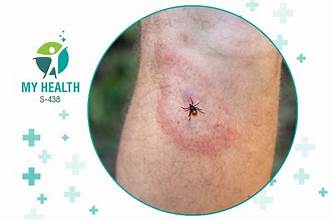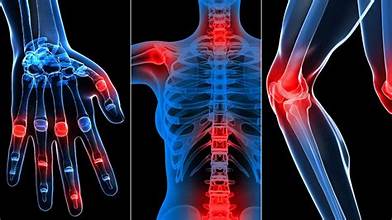What is Lyme Disease?
Lyme disease is a bacterial infection caused by Borrelia burgdorferi, transmitted when deer ticks feed on infected animals like deer and rodents, and then bite humans. According to researchers half a million individuals in the U.S are affected annually by Lyme disease. Lyme disease can be devastating; but early diagnosis and treatment with antibiotics can prevent chronic symptoms like heart and neurological problems and arthritis from developing.
Understanding Lyme Disease:
Ticks are small, spider-like parasites that feed on the blood of animals and humans. When an infected tick bites, the bacteria in its saliva enter the bloodstream, where they begin to spread. Not every tick carries Borrelia burgdorferi, but because ticks are so small and bites are often painless, many people do not realize they have been bitten until symptoms appear.
Lyme disease progresses in stages, and each stage presents different signs and complications. Identifying the early warning signs is essential because treatment with antibiotics is most effective during the initial phase.
Symptoms of Lyme Disease:
The symptoms of Lyme disease can be divided into three stages: early localized, early disseminated, and late disseminated.
Early Localized Stage (3 to 30 days after tick bite):
This is the initial stage when the infection is limited to the area around the tick bite. Symptoms may include:
- Erythema migrans (EM) rash:
- This is the most distinctive symptom of Lyme disease.
- Appears at the site of the tick bite, usually within 7–14 days.
- The rash is often circular, expanding over several days, and may develop a “bull’s-eye” appearance with a central clearing.
- It is usually not painful or itchy, which makes it easy to overlook.
- Flu-like symptoms:
- Fever and chills
- Headache
- Fatigue and weakness
- Muscle and joint pain
- Swollen lymph nodes
Many people mistake these symptoms for a common viral infection, which delays diagnosis.
Early Disseminated Stage (weeks to months after bite):
If untreated, the bacteria begin to spread throughout the body. Symptoms in this stage may include:
- Multiple rashes on different parts of the body (not just the original bite site).
- Neurological problems:
- Facial palsy (temporary paralysis or weakness of facial muscles).
- Tingling, numbness, or shooting pains in the arms or legs.
- Meningitis-like symptoms such as severe headaches and neck stiffness.
- Heart problems:
- Lyme carditis (infection affecting the heart).
- Irregular heartbeat, chest pain, or dizziness.
- Severe fatigue and weakness that interfere with daily life.
Late Disseminated Stage (months to years after infection):
When Lyme disease remains untreated for a long period, it can cause chronic and debilitating conditions:
- Severe joint pain and swelling (Lyme arthritis), often affecting the knees.
- Neurological complications:
- Memory problems, confusion, or difficulty concentrating (“brain fog”).
- Neuropathy (nerve pain, numbness, or tingling).
- Chronic fatigue syndrome-like symptoms.
- Sleep disturbances and mood changes such as depression or anxiety.
This stage highlights why early recognition and treatment of Lyme disease are so critical.
Why Early Diagnosis Matters:
Lyme disease is often misdiagnosed because its early symptoms mimic other illnesses like influenza, viral infections, or arthritis. However, if treatment with antibiotics (such as doxycycline, amoxicillin, or cefuroxime) is started early, most patients recover fully. Delayed treatment increases the risk of long-term complications that can last months or years.
Prevention Tips for Lyme Disease:
Since no widely available vaccine currently exists for Lyme disease, prevention remains the best strategy. By reducing exposure to ticks and taking careful precautions, the risk of infection can be greatly minimized.
Here are detailed prevention tips:
Avoid Tick-Infested Areas:
- Ticks thrive in wooded areas, tall grass, shrubs, and piles of leaves.
- When hiking, stick to the center of trails instead of walking through brush or dense vegetation.
- Be especially cautious in warm months (spring through early fall), when ticks are most active.
Dress for Protection:
- Wear long-sleeved shirts and long pants when spending time outdoors.
- Tuck your pants into socks or boots to create a barrier against ticks.
- Choose light-colored clothing, which makes it easier to spot ticks crawling on you.
Use Insect Repellents:
- Apply repellents containing 20–30% DEET on exposed skin.
- Treat clothing, boots, and gear with permethrin, an insecticide effective against ticks.
- Always follow instructions on labels to ensure safety.
Perform Regular Tick Checks:
- After spending time outdoors, carefully check your entire body, including:
- Behind the ears
- Around the hairline and scalp
- Under the arms
- Behind the knees
- Around the waist
- Between the legs
- Parents should check children thoroughly, and pet owners should check their animals.
Shower Soon After Outdoor Activity:
- Showering within two hours of coming indoors helps wash off ticks that may not yet be attached.
- It also provides a good opportunity to conduct a thorough body check.
Remove Ticks Properly:
If you find a tick attached to your skin:
- Use fine-tipped tweezers to grasp the tick as close to the skin as possible.
- Pull upward with steady, even pressure. Do not twist or jerk the tick, as this may cause parts to break off and remain in the skin.
- After removal, clean the bite area with soap and water or an antiseptic.
- Dispose of the tick by flushing it down the toilet or sealing it in a bag.
Make Your Yard Tick-Safe:
- Keep grass trimmed short and remove weeds and leaf litter.
- Place wood chips or gravel between lawns and wooded areas.
- Stack wood neatly in dry areas to discourage rodents (which carry ticks).
- Consider fencing to keep deer out, as they are common hosts for ticks.
Protect Pets:
- Dogs and cats can bring ticks into the home.
- Use veterinarian-recommended tick collars, sprays, or oral medications.
- Regularly check pets for ticks after outdoor activity.
Be Alert to Symptoms:
- Even with precautions, tick bites can still happen.
- If you notice a rash, flu-like symptoms, or unusual joint or nerve pain after spending time outdoors, seek medical care immediately.
- Early testing and antibiotic treatment are the best defense against long-term complications.
Living Safely in Tick-Prone Areas:
If you live in or travel to areas where Lyme disease is common, prevention needs to become part of your lifestyle. Simple daily practices like checking yourself after outdoor activities, using repellents, and keeping your yard tick-free can make a big difference. Awareness is key: the more you know about ticks and their behavior, the better you can protect yourself and your loved ones.
Key Take away:
- Lyme disease is caused by the bacterium Borrelia burgdorferi, spread through infected tick bites.
- Symptoms develop in stages: rash and flu-like signs early on, neurological and joint problems later if untreated.
- Prevention includes protective clothing, insect repellents, tick checks, and safe tick removal.
- Early treatment with antibiotics is highly effective, but delayed diagnosis can lead to chronic health issues.
Final Thoughts:
Lyme disease is a serious but preventable illness. By understanding the symptoms and practicing smart prevention habits, you can greatly reduce your risk of infection. Whether you are an outdoor enthusiast, a pet owner, or simply someone living in a tick-prone area, awareness and vigilance are your best tools.
Early recognition and prompt medical attention are critical so if you suspect you may have been bitten by a tick or notice warning signs, consult a healthcare professional immediately. Prevention is always better than cure, and with the right precautions, you can enjoy outdoor activities while staying safe from Lyme disease.







